Bronze abstract sculpture with a marble base depicting a group of men, women, and children crowded into a boat, Exodus
Nathan Rapoport was born in 1911 in Warsaw, Poland to a poor but extremely religious Jewish family. He was the grandson of Hasidim: one grandfather was a cantor; the other a shochet [ritual slaughterer]. As a child he belonged to Hashomer Hatsa’ir [Young Guard of the Zionist Left Wing], and attended Hebrew school. However, he had to leave school to help support the family. Rapoport trained as an architectural apprentice and at age 14 entered a municipal art school and studied sculpture. He attended the Academy of Art in Warsaw and won awards for his architectural, metal, and sculptural work and commissions for portrait busts that helped pay his tuition. He received scholarships to study at the Fine Arts Academy in Paris and to travel to Italy. Throughout the 1930s, he entered and won many competitions. In 1936, his piece, The Tennis Player, was submitted by the Polish government for exhibition in Berlin as part of the Summer Olympics, but Rapoport refused to let it be shown in Nazi Germany. In June 1939, Rapoport left Paris and returned to Warsaw. When Germany invaded Poland on September 1, 1939, Rapoport fled the city to join the Polish army which was regrouping in the forests between Warsaw and Bialystok. Unable to locate the army, Rapoport, along with other Jewish refugees, fled east into Soviet-controlled territory. Refugees who could provide skills deemed valuable by the state were allowed to stay in the Soviet Union. Rapoport identified himself as an artist and joined a collective of 120 Jewish artists in Bialystok which provided food, clothing and housing. Members of the Communist Party Arts Committee arrived from Minsk, looking for works for an upcoming exhibition. Rapoport’s work impressed the committee and they moved him to a studio in Minsk where he worked alongside another Jewish artist. Several of his pieces were shown at this exhibition. While in Minsk, the 2nd secretary of the Party, Kulagin, visited Rapoport’s studio and commissioned several state projects. On June 26, 1941, the Germans captured Minsk after a surprise attack on the Soviet Union, and Rapoport and his wife were evacuated to Alma Alta. Rapoport was forced to leave his family and was shipped to a forced labor prison camp in Novosibirsk, Siberia. Rapoport learned that his former patron, Kulagin, now the 1st secretary of the Party, was based in Novosibersk. The two met and Kulagin moved Rapoport out of the camp and into a studio. He provided Rapoport with food and vodka; Rapoport used the alcohol as currency to purchase supplies. Recommissioned as state sculptor, he created sculptures of people the state deemed worth remembering, such as people and heroes of the Patriotic War. He spent the remainder of the war living and working in Russia until he was repatriated to Warsaw in early 1946. Both his mother and sister perished during the Holocaust. In 1947 Rapoport presented a model to the Warsaw Jewish Committee. The model commemorated the Warsaw ghetto uprising, which began on April 19, 1943, when Jewish residents of the ghetto, faced with deportation, resisted German forces. It ended on May 16, 1943, with the destruction of the ghetto. The committee accepted his design with the provision that it must be completed by the anniversary of the uprising on April 19, 1948. Soon after the dedication, Rapoport emigrated to the newly established state of Israel where he lived until immigrating to the United States in 1959, becoming a citizen in 1965. Rapoport produced multiple, large scale, public works memorializing the Holocaust throughout the world, including Yad Vashem and Kibbutz Yad Mordecai in Israel and monuments in Philadelphia and New York City. He died in New York City on June 6, 1987. At the time of his death, he was divorced and survived by a daughter. He was 76 years old. Emu Biography: Nathan Rapaport also designed a monument to the Warsaw ghetto uprising which was unveiled in 1948. No restrictions on access Sculpture created by Nathan Rapoport representing the voyage of the Exodus 1947. The sculpture depicts several figures gathered around a central bearded male figure positioned on a small sailing vessel. It is thought that Rapoport began drafting designs for this sculpture soon after the event and around the same time that he was creating his best-known work, the Warsaw Ghetto Uprising Memorial. However, the exact date and place of creation are unknown. The Exodus was a cargo ship that left France in 1947 intending to illegally transport 4500 Jewish Holocaust survivors to British ruled Palestine. British destroyers blockaded the ship and forced it to return to France. The passengers were removed from the ship and transferred to displaced persons camps in Germany. Rapoport was a Jewish artist from Warsaw, Poland. In 1939, he fled Warsaw during the German invasion and spent World War II in the Soviet Union. He was repatriated to Warsaw in 1946 and the Warsaw Ghetto Uprising Memorial was unveiled in 1948, after which he emigrated to Palestine. During his career, he produced multiple, large scale works memorializing the Holocaust worldwide.
- EHRI
- Archief
- us-005578-irn516364
- Holocaust, Jewish (1939-1945), and art.
- Jewish refugees--Russia--Biography.
- Object
Bij bronnen vindt u soms teksten met termen die we tegenwoordig niet meer zouden gebruiken, omdat ze als kwetsend of uitsluitend worden ervaren.Lees meer




